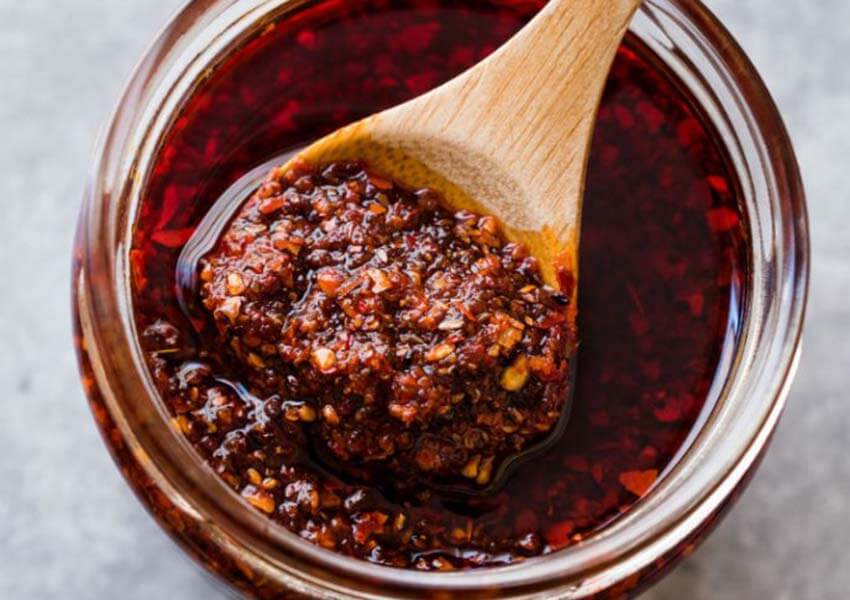I’ve been in a bit of a rut in the kitchen lately, making the same things over and over. Even the simplest change — like making a fresh salsa to have with grilled fish or chicken — has seemed like too much work, and I’m such a “purist” that I never buy canned or pre-made salsas. Well, that’s all about to change.
It’s easy to doctor up store-bought salsas, and there’s no reason not to. (Where I came up with that random parameter I don’t know.)
The spicy-sweet kick of salsa works on just about anything: omelets and egg dishes; grilled meats of all kinds; baked potatoes; added to pasta sauces, stews or soups; mixed into ground beef for burgers; as a topping for fish; or as a marinade. And starting with a ready-made base of whatever kind of store-bought salsa means you’re more than halfway done before you even start.
What we want to do is enhance the flavor and bring back the bright zing of fresh ingredients. Canned or jarred salsa can’t help that it tastes the way it does; the high heat necessary for processing and preserving it strips the fresh ingredients of, well, their fresh taste.
The easiest fix is to add fresh lime juice and a handful of minced fresh cilantro; go one step further and add some chopped tomato, onion or cucumber and you change the texture as well as the flavor. The citrus (or a little vinegar) also provides an acidic balance to the other ingredients.

A bit more complicated — but well worth the effort — is to add something roasted or grilled. This doesn’t have to be complicated; even a single jalapeño, poblano, bell or serrano pepper, held over a gas flame and charred till blackened, will enhance the flavor of any salsa immensely. (Place charred pepper in a bowl covered with plastic, let it steam for a few minutes, peel off the skin, remove seeds and ribs and chop.)
Feeling adventurous? Do the same thing with an ear of corn and add those roasted kernels to a bean- or tomato-based salsa and watch the magic happen.
Adding a small pinch of ground dried spices like cinnamon, coriander, cumin or even Mexican oregano can tweak tomato-, fruit- and bean-based salsas. This is also good with salsas that are heavy on the dried chiles.
Adding some finely chopped fresh fruits like mango, pineapple or papaya can change everything about a salsa in a good way. Be careful not to add too much, or it’ll taste more like curry than salsa!
It’s hard to imagine who “invented” salsa and when. The first recorded reference is from a Franciscan missionary in the early 1500s who wrote about seeing a ground-up mixture of “chile peppers, tomatoes and seeds” poured over meat. (Note that onions, lime and cilantro — all mainstays of more modern-day salsas — are not mentioned.)
You’ll have to experiment with these ideas; every store-bought salsa will be different, and the amounts and types of ingredients you add will yield varying results. Taste first, noticing on your tongue if the overriding taste is sour, hot or sweet.
Some will be hot enough as they are; others will be able to hold more spice or sweet. Just keep tasting as you go. Let me know in the comments what you come up with. And in case you feel inspired to start from scratch, here are some classic salsa recipes:
Charred Salsa Verde
- 1½ lbs. tomatillos, husks removed, split in half (about 10 medium)
- 1 medium white onion, halved
- 2–4 serrano or jalapeño chiles, seeds and ribs removed, halved
- 15 sprigs cilantro
- 1 Tbsp. vegetable oil
- Salt
In a broiler or on a comal, roast tomatillos, onion and chiles until darkly charred and blackened on top and the tomatillos are completely tender, 6–12 minutes. Transfer vegetables and their juice to blender or food processor. Add half the cilantro. Pulse to a rough purée.
Heat oil in medium saucepan over high heat. Pour salsa into hot oil all at once (it will steam and sputter). Immediately stir and cook until salsa is darkened and thick enough to coat back of spoon, about 3 minutes. Remove from heat.
Mince remaining cilantro; stir into salsa. Season with salt. Let cool; serve. Refrigerate up to 5 days. — seriouseats.com

Chile Morita Salsa
This is a deep-red, smoky and delicious salsa.
- 2 dried chile moritas OR dried chipotles
- 1 lb. tomatillos, husks removed
- 1 clove garlic, unpeeled and cut in half
- Salt
Cook chiles on a comal or in a hot, dry cast-iron skillet until they inflate and pop (about two minutes). Pour enough water over the chiles to cover. (Transfer to bowl if using a comal.) Let sit 30 minutes to soften.
Char tomatillos in a skillet until they blister and blacken. Transfer to blender or food processor; add garlic, chiles and a pinch of salt. Purée until smooth.
Pineapple-Jicama Salsa
- 1½ cups finely chopped fresh pineapple
- 1 cup finely diced peeled jicama
- ½ cup finely diced red bell pepper
- ½ cup minced red onion
- 1 tsp. minced fresh ginger
- 1 Tbsp. lime juice
- 2 Tbsp. minced cilantro
- Pinch salt
Combine all ingredients. Let rest for an hour to blend flavors.
Janet Blaser is the author of the best-selling book, Why We Left: An Anthology of American Women Expats, featured on CNBC and MarketWatch. She has lived in Mexico since 2006. You can find her on Instagram at @thejanetblaser.
